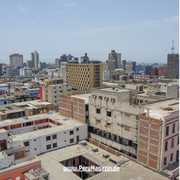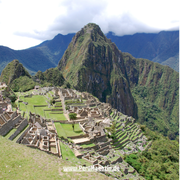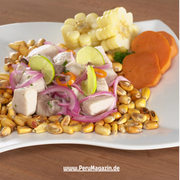
Peru, a diverse and culturally rich country in South America, is administratively divided into different levels that allow the country to be managed efficiently and meet the needs of its population. Peru's administrative divisions include regions, provinces and districts, with each level having its own responsibilities and responsibilities. In this post, we will provide a detailed look at the administrative divisions of Peru, including key dates and facts about each level.
1. Regions
Peru is divided into a total of 25 regions known as Regiones. These regions are independent administrative units with elected government representatives responsible for administering the region. Each region has a capital and its own governing structure, consisting of a regional president and a regional council.
Here are some important facts about the regions of Peru:
- Number of regions: Peru has a total of 25 regions.
- Largest Region: Peru 's largest region is Loreto, which covers most of the Peruvian Amazon Basin.
- Smallest Region: Peru 's smallest region is Callao, an autonomous region also known as Lima Provincias and part of the Lima metropolitan region.
- Population: The population of each region varies significantly. Lima, the capital region, is the most densely populated region in the country, while some remote regions in the Amazon are sparsely populated.
- Economic importance: Some regions, such as Lima, Arequipa and Cusco, are economic centers with high levels of economic activity, tourism and trade.
- Cultural diversity: Each region of Peru has its own cultural traditions, customs and heritage that reflect the diversity of the country.
2. Provinces (Provincias)
Each region is divided into provinces called provincias. These provinces have their own administrative structures consisting of a mayor and a provincial council. Provinces are the next level of administration below regions and play an important role in local governance and the provision of public services.
Here are some important facts about the provinces of Peru:
- Number of Provinces: Peru has a total of 196 provinces spanning the entire country.
- Variation in size: The size of provinces varies significantly, with some provinces being larger than some regions.
- Population Density: Population density across provinces can vary greatly, with some provinces being densely populated, particularly in urban areas, while other provinces are sparsely populated, particularly in rural and remote areas.
- Economic activity: Economic activity in the provinces is often closely linked to natural resources and geographical location. Some provinces are agricultural, while others are based on mining, industry or tourism.
- Cultural Heritage: Each province has its own cultural heritage and traditional customs, often closely linked to the history and geography of the region.
3. Districts (Distritos)
Districts are the smallest administrative unit in Peru and form the basis of local governance. Each province is divided into districts known as distritos. Each district is administered by a mayor and district council and is responsible for providing a variety of public services at the local level.
Here are some important facts about the districts of Peru:
- Number of Districts: Peru has over 1800 districts spread across the entire country.
- District diversity: Peru 's districts vary greatly in size, population and economic activity. Some districts are urban centers with high population densities and a variety of economic opportunities, while other districts are rural communities that rely primarily on agriculture and ranching.
- Local governance: Districts play an important role in local governance and are crucial in the provision of basic services such as healthcare, education, road construction and waste management.
- Community Collaboration: Many districts work closely with neighboring districts and other local organizations to meet the needs of their communities and improve the quality of life of their residents.
Special cases and autonomous regions
In addition to the administrative levels mentioned above, there are also some special cases and autonomous regions in Peru that have certain self-government powers. This includes:
- Lima Autonomous Region (Callao): Callao is an autonomous region also known as Lima Provincias. It is a special case because Callao is part of the Lima metropolitan region and has its own administrative structure, independent of the neighboring Lima region.
- Other Autonomous Regions: There are also other autonomous regions in Peru that have certain autonomy rights and self-government powers to meet the needs of their populations.
Peru 's administrative divisions are a complex system consisting of multiple levels that work together to efficiently manage the country and meet the needs of its diverse population. From regions to provinces to districts, each level of government plays an important role in providing public services, promoting economic development and preserving the country's cultural heritage. Through effective cooperation between the different levels of government, Peru can continue on its path to growth, development and prosperity.
Sold out
Original price
€29,99
Original price
-
Original price
Original price
€29,99
Current price
€19,99
-
Current price
€19,99



